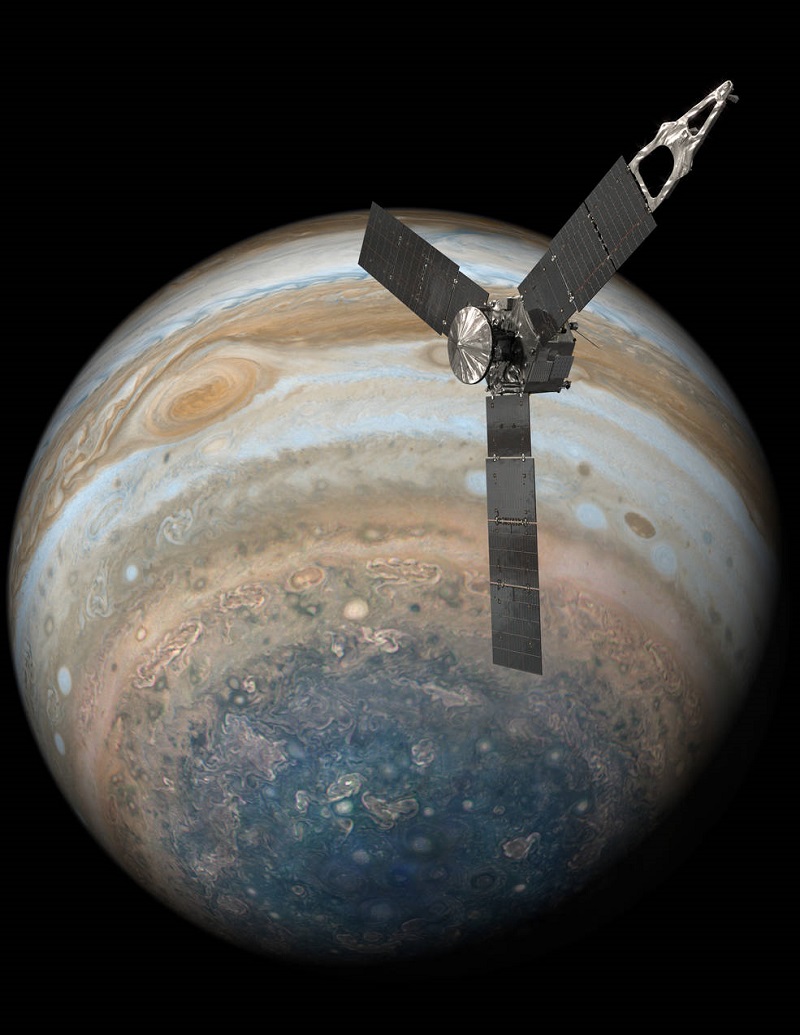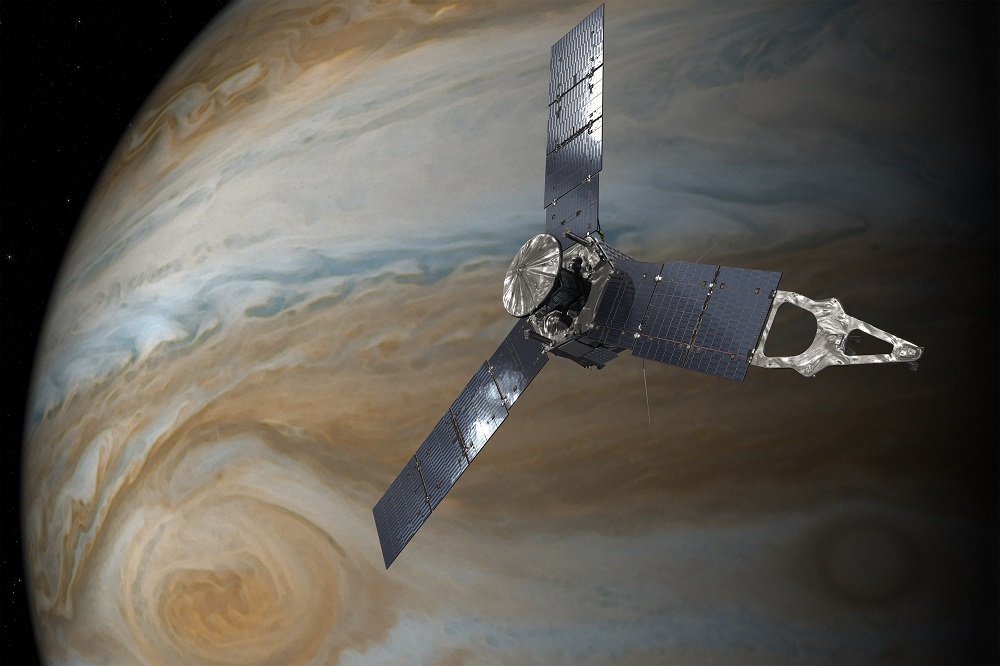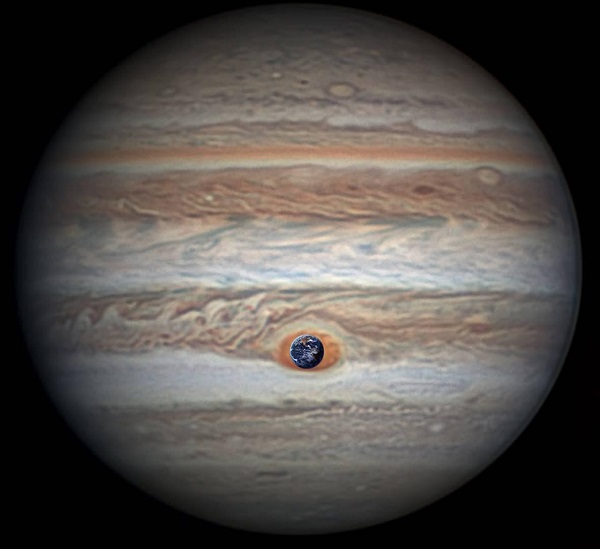The six-year journey of NASA’s Juno spacecraft will soon yield new photographs of Jupiter’s Great Red Spot after a July 10 flyby. Images are still coming in from the mission, which involved sending the spacecraft 5,600 miles above the 10,000-mile wide storm. Juno will perform another flyby around Jupiter on Sept. 1.

An artist’s renditionf Juno at Jupiter’s south pole. Image credit: NASA/JPL-Caltech
At its closest approach on the July flyby, Juno flew about 2,200 miles above Jupiter’s dense, cloudy atmosphere. It reached perijove, the closest the orbit reaches to Jupiter’s center, at 6:55 p.m. on July 10.

An illustration of Juno in orbit around Jupiter. Image credit: NASA/JPL-Caltech
The Great Red Spot is a swirling storm that has been observed from Earth since at least 1830. Its origin and the chemical reactions that give rise to the red color are not precisely known. Juno’s goal includes studying Jupiter’s thick atmosphere and the auroras that form within it in order to understand more about these phenomena.

An illustration of the Great Red Spot as compared to the Earth. The Great Red Spot is 10,159 miles wide as of April 2017, making it 1.3 times the width of Earth. Image credit: NASA/JPL-Caltech/SwRI/MSSS/Christopher Go
Filed Under: Aerospace + defense




